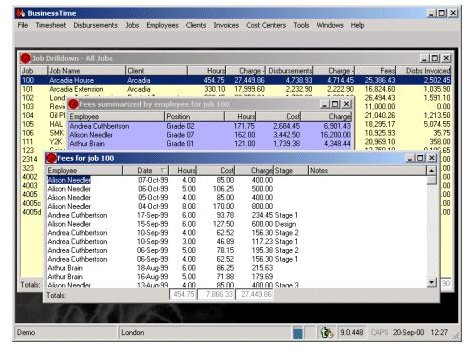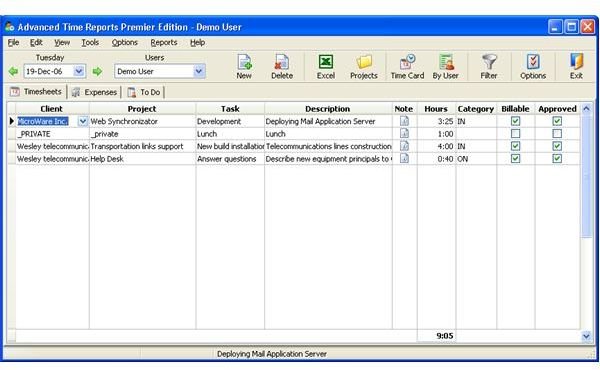Typical Formats for Project Management Reports
Project Management Reporting Examples
Regardless of the project at least one project management report must be submitted by the project manager. Oftentimes these reports can be as simple as updates on how the project is going, since many upper-management personnel are not interested in the details of a project. They are strictly interested in knowing that the project is on schedule and on budget. This article will give you some ideas for typical project management reports to keep your stakeholders informed. [caption id=“attachment_133059” align=“aligncenter” width=“640”] Keep your stakeholders informed of status and updates[/caption] For some more examples of project management reports, please refer to the following links. At other times, project management reports will be more detailed, involving usually six key metrics: meeting scheduled deadlines, cost, use of resources, scope changes, quality control and taking action. Most of your reports will fall into the later group. But, they will probably all come in different formats. Your audience is particularly important when writing a project management report. Some people will want more information; some may want less. You may have a large audience or a smaller one. Sometimes the people who are reading the reports have different technical abilities and levels of knowledge. In such cases, you should gear your writing for a wider audience. There will also be different requirements for when project reports are due therefore, it is good to get this information beforehand. Most customers and managers are not interested in narratives and prefer reports to be around one page long. Many project management reports are simply yes and no answers with brief descriptions. You will have questions like the following: “Did the project start on time?” “Is it on budget?” or, “are there any issues that have arisen?” As stated, when approached with these type of situations, the person receiving the information is only looking for short answers in addition to the yes or no response. Some project management reports are department specific. Each department working on a project will provide an individual report. These include monthly progress reports, summary reports and chairman’s reports. Monthly reports usually focus on the following topics:
Keep your stakeholders informed of status and updates[/caption] For some more examples of project management reports, please refer to the following links. At other times, project management reports will be more detailed, involving usually six key metrics: meeting scheduled deadlines, cost, use of resources, scope changes, quality control and taking action. Most of your reports will fall into the later group. But, they will probably all come in different formats. Your audience is particularly important when writing a project management report. Some people will want more information; some may want less. You may have a large audience or a smaller one. Sometimes the people who are reading the reports have different technical abilities and levels of knowledge. In such cases, you should gear your writing for a wider audience. There will also be different requirements for when project reports are due therefore, it is good to get this information beforehand. Most customers and managers are not interested in narratives and prefer reports to be around one page long. Many project management reports are simply yes and no answers with brief descriptions. You will have questions like the following: “Did the project start on time?” “Is it on budget?” or, “are there any issues that have arisen?” As stated, when approached with these type of situations, the person receiving the information is only looking for short answers in addition to the yes or no response. Some project management reports are department specific. Each department working on a project will provide an individual report. These include monthly progress reports, summary reports and chairman’s reports. Monthly reports usually focus on the following topics:
- milestones
- how much money was made
- new projects acquired
Summary reports summarize what’s going on with a current project. These reports include how activities moving along, the budget, and schedules. Chairman’s reports involve the physical progress of contracts and achievements. While these types of reports are common, the most frequently used involve the six metrics in more detailed form. The metrics are usually given green, yellow and red status, depending on how well they are progressing. As would be expected, green means that the project is going well. Yellow indicates there are some problems to be overcome, and red means that there’s a major issue that needs to be corrected immediately. The project timeline is usually used to measure how the project is progressing. Most major projects will have one or two tasks behind schedule, but it is expected and taken into the equation for on-time delivery. Project cost measures how much we should be spending on a given interval, for example, weekly, biweekly or monthly. This, like project schedules are used to measure how well the project is advancing. If you’re in the red status on your project cost, you may have overspent your budget significantly. Your resources are your manpower: how well your staff is performing overall. Depending on the skill level your resources can be more (highly skilled employees) or less (lower skilled employees) expensive. The scope of your project should change all the time. While the scope is important, it should be a flexible measure. Keep in mind, project scopes change frequently. Quality control is probably the most important aspect of your reporting. You want to deliver on schedule and within budget. If your project, however, doesn’t work or isn’t what the client wants, it won’t matter if you meet those previous requirements. This is what makes interim project reporting so important. Your client or managers can see how the project is shaping up.
Risk Management and Status
The final aspect of reporting is what action is being done for which problem. You’ve reported on some of the issues that you’ve encountered. Now, your sponsors want to see what you’re doing about it. This is where you can praise the work you and your team has done in correcting a particular situation. You can also take this section to make recommendations for the next step of the project or other such issues. On some reports, you’ll not only have to report on the current project, but other ongoing projects that may be related to this one. Project reports, especially interim reports, can be made at any stage of a project, telling your sponsor how the project has progressed to a certain point in time. Final reports summarize how the project went overall: were goals met, did you stay within budget and other such issues. If there’s any lesson to project management reporting, it’s that you need to know your audience and write for their needs. Use the format that best fits your company requirements, and you should provide your sponsors with quality, encompassing reports.
Images


Image by StartupStockPhotos from Pixabay
Screenshots by author